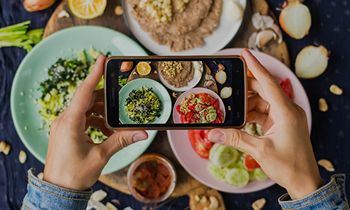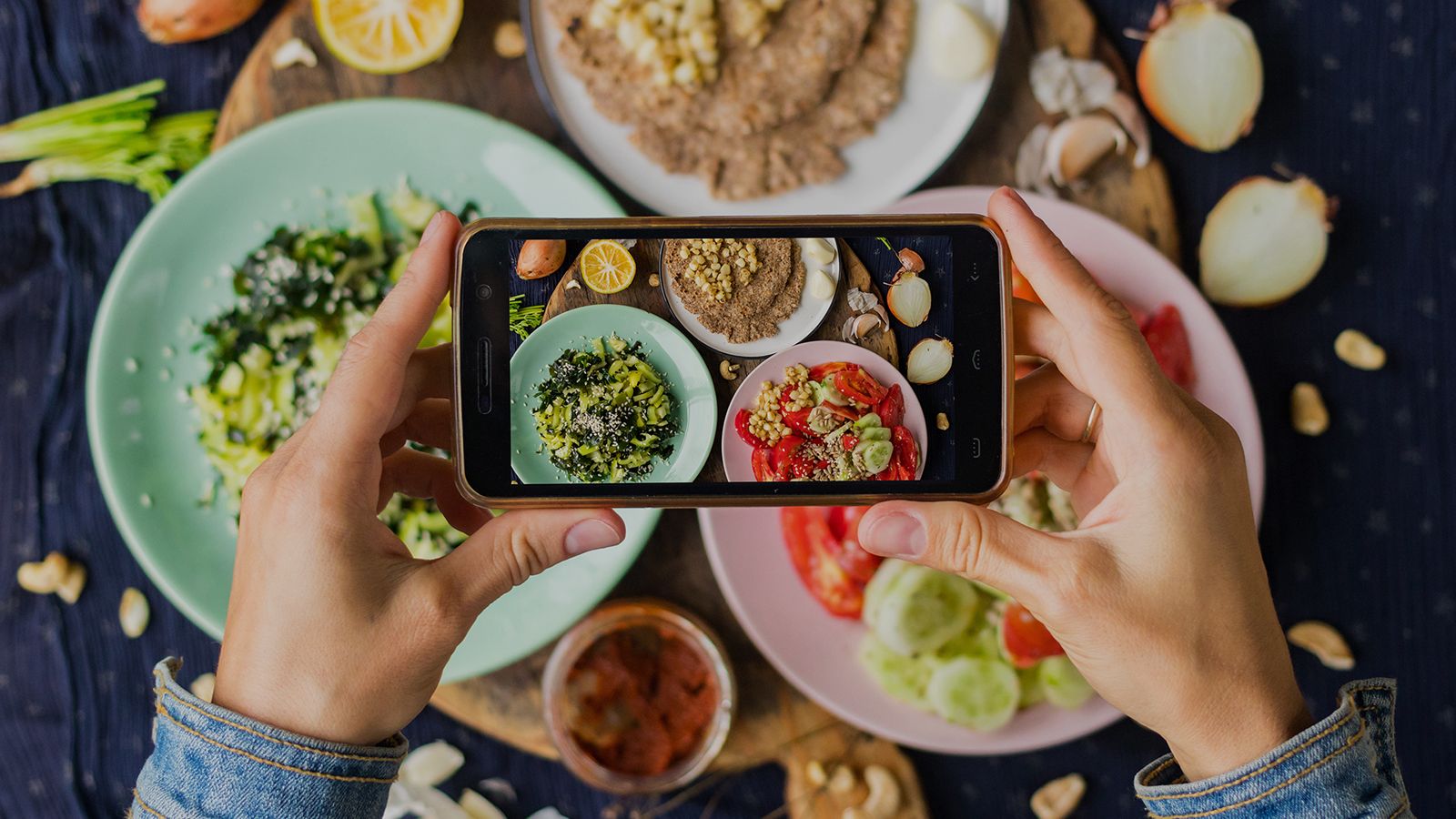 by Jared Scott
by Jared Scott
Chief Marketing Officer – Pavone Marketing Group // General Manager Pavone Marketing Group/Quench
For more than a decade, Quench has been predicting food and beverage trends. Our teams spend hundreds of hours engaged in primary and secondary research since 2011.
Quench’s “2022 Food + Beverage Trends” report looks at seven trends about which brands should be cognizant, so they can calibrate their marketing and relevant consumer-targeted messages. Saving the environment and money are themes reflected in each of these trends: upcycled diets, regenerative agriculture, flexitarian kids, beyond carbon neutral, Frankenmeat, adaptogenic mushrooms, and buzz-free spirits.
Upcycling. This practice makes use of ingredients that otherwise would not have gone to human consumption and sees a place in the modern diet for misshapen and bruised fruit, edible leaves, and pulp leftover from juicing. The waste-not, want-not movement isn’t new, but its popularity and the demand from consumers is skyrocketing.
- 1.3 billion tons of food is wasted each year, representing about 30% of all food produced globally.
- Only 10% of consumers are familiar with upcycled food products – but after a bit of education, 80% say they would be likely to seek them out.
- A report produced by Future Market reveals that the upcycled food market is worth $46.7 billion.
In early 2020, the Upcycled Certification Standard was ratified, leading to the creation of a “certified upcycle label.” The new label will be applied to products that live up to their standards, helping guide consumer selection.
Regenerative agriculture. This system of farming and grazing practices seeks to reverse climate change by rebuilding soil organic matter. Healthier soil creates nutrient-dense food while improving the land it’s grown on.
- The current process of converting natural land into farmland not only removes important nutrients from the soil but also reduces the amount of carbon held by 50% to 75%.
- The current industrial food system is responsible for 44% to 57% of all global greenhouse gas emissions.
- The practices associated with regenerative agriculture increase soil biodiversity and organic matter, yielding more resilient soils that can better withstand climate change impacts like flooding and drought.
Flexitarian kids. The flexitarian movement is characterized by non-vegetarians who eat mostly plants, with the occasional inclusion of meat, eggs, and dairy. And while the trend has mostly focused on adult eating habits, the healthy eating habit is becoming popular with kids, thanks largely to forward-thinking parents and caregivers. Brands big and small are taking notice, offering plant-based snack and meal options or plant-and-meat hybrids to satisfy parents’ desires to diversify their kids’ diets.
- A 2021 report from Boston Consulting Group and Blue Horizon Corporation predicts that by 2035 alternative proteins will account for 11% of the total protein market.
- 67% of households report using more fruits and vegetables in snacks in their children’s diets.
- 60% of kid-based households are adding plant-based options to their menus and more than 80% are offering those options to their children.
Beyond carbon neutral. The forces driving carbon negative (also known as climate positive) are consumers. Eco anxiety continues to influence consumer purchasing behavior, pushing brands to not only reduce carbon emissions to zero but to also remove more carbon emissions than they emit. Brands joining the trend will invest in new ways to reduce their carbon footprint through closed-loop design and new manufacturing processes.
- The Center for Sustainable Systems found that the production of food accounts for 83% of all greenhouse gas emissions.
- The world’s 100 largest companies are responsible for more than 70% of the world’s carbon emissions.
Frankenmeat. In vitro meat, or synthetic meat also known as “Frankenmeat,” has been in development for several years. Thanks to scientific advances and a growing consumer embrace of meat substitutes, 2022 might be the year the lab-grown proteins become a mainstream option. To create such “clean meat,” food scientists developed a process for in vitro cultivation of meat cells to produce protein that is biologically and nutritionally identical to meat from traditionally raised and slaughtered animal sources but that involves neither animal agriculture nor animal slaughter. It is, quite literally, meat “grown” in a laboratory, and it could radically change the agriculture industry forever.
- According to global consulting firm Kearny, 35% of all meat will be lab-grown by the year 2040.
- An Oxford University study suggests that lab-grown meat can reduce greenhouse gas emissions by as much as 96%, and reduce water consumption by 82% to 96%.
- Eighty companies, backed by more than $800 million in investments, are racing to develop lab-grown meat products.
- The first lab-grown beef burger was created in 2013 from 20,000 lab-grown muscle strands, and would have retailed for about $333,000. Today, a similar patty sells for $10, with prices expected to decrease in 2022.
Adaptogenic mushrooms. Mushroom varieties such as lion’s mane, chaga, shiitake and maitake once mainly prized for their taste and flavor profiles are now cherished for the functional benefits they deliver. The cordyceps, which can be found growing on the head of a caterpillar in the Tibetan high plateau, has been used in China for thousands of years by royal and elite families as a tonic for energy, vitality, endurance, and to support a healthy immune system. And today, it finds new life in a trend two millennia in the making.
- The global adaptogenic mushroom market generates $8 billion in sales annually and is expected to grow to $19 billion by 2030.
- An estimated 2,000 species of mushroom are edible, but only 15 are recognized for their functional benefits.
- Some wellness influencers are adding functional mushrooms via powders and tinctures to smoothies, coffee, and other recipes.
Buzz-free spirits. This pandemic-fueled trend began with “sober-curious” consumers, who began pondering the adverse health effects of alcohol. According to recent Gallup data, Americans are drinking less overall than they did at various points during the past 20 years.
Just like coffee drinkers choosing from a variety of milks to add to their java, happy-hour drinkers can now mix a medley of alcohol-free spirits to avoid hangovers (and calories) that come from traditional booze.
- Many “sober-curious” consumers are younger millennials who still drink alcohol but are mindful of the impact alcohol consumption has on physical and mental health.
- According to NielsenIQ, sales of non-alcoholic beverages rose 33.2% in the past year, with $331 million in total sales. The boost was buoyed by non-alcoholic spirits, which grew 113%.
In summary, these “big ideas” are shaping the food and beverage industry – and by extension, ad-marketing industries – for the foreseeable future. Brands, agencies, and publishers would do well to get on board.

